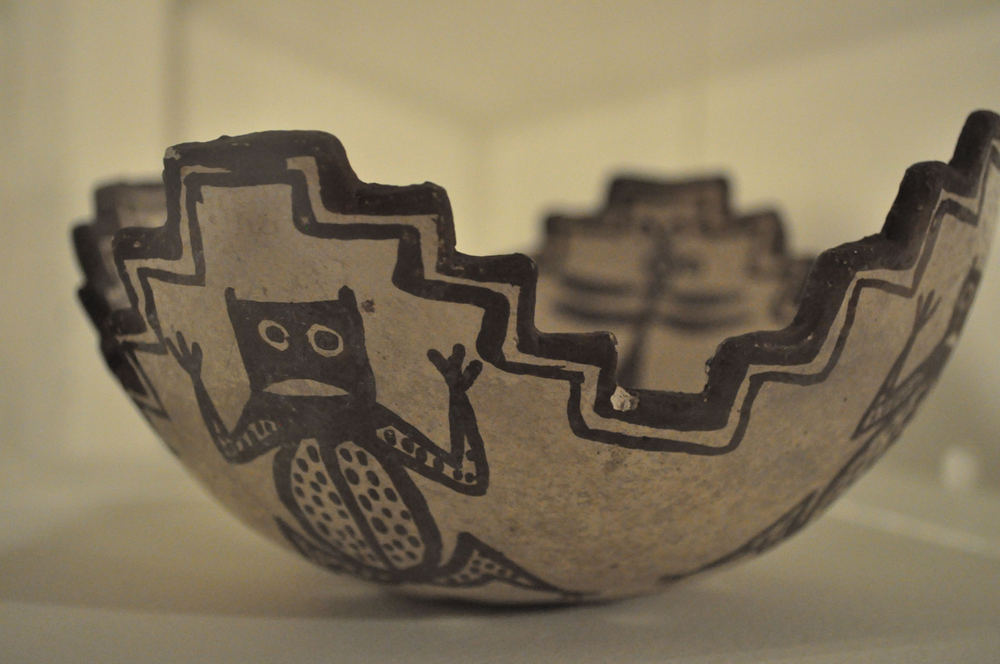by Barbara Keegan
On September 10, the Schumacher Gallery obtained a new exhibit.
Until October 18th, Pueblo to Pueblo: The Legacy of Southwest Indian Pottery will be the gallery’s main draw.
The collection consists of about 70 different pieces of pottery from Pueblo Indians, or Native Americans that lived in a fixed location.
Dating from the mid-nineteenth to the mid-twentieth century, no two pieces are exactly the same.
The pottery was originally for personal use so the older items are made from an extensive variety of clay types, shapes, and designs.
As more and more travelers started to make their way to the southwest, the Indians discovered that they could sell these unique pieces for a good price.
This made the newer styles have a much more intense and ornate design, whereas the original pieces often had little to no design at all.
It was a long and extensive process used by the early Indians to create such beautiful pieces of work.
After forming a base with the clay, they would hand twist clay pieces into strong ropes and slowly press them around the edge of the base.
This process took hours and was repeated at least four times for just a small pot. The creator then used a rock or their own hand to smooth both the inside and outside, perfecting the pot’s shape.
Of course, pots weren’t the only thing created by these natives.
Canteens were also a common art. Created with a small spout at the top to insert and remove water, the clay canteens would have one nub on each side of it to wrap a rope around.
They were easily hung around a traveler’s neck. Occasionally vases and figures were made as well.
One tribe made unusual, double-necked vases for wedding presents, while others made figures of rain gods holding out pots to collect the rain.
Animals were also a main design for both small figurines and prints on pots.
The Schumacher Gallery reserved the Pueblo to Pueblo exhibit about three years ago through Smith Kramer, a company dedicated to traveling art exhibits.
This exhibit contains clay artwork from over ten different Indian tribes located throughout what is now northeast Arizona and northwest New Mexico.
The exhibit calls Kansas City Museum and Union Station, located in the state of Missouri, its’ home. After coming here from Texas, the clay exhibit took about a week and a half to set up and will remain for another five weeks before heading out to New Mexico.
“It came in six crates,” David Gentilini, the assistant to the director, commented, “but each pot has its own foam cut out to fit it. We purchased about 15 hoods to cover the pieces over summer, just to make sure we had enough.”
The Pueblo to Pueblo is currently sitting outside of Schumacher Gallery’s own Indian art exhibit.
“We wanted to bring in something that could highlight our own exhibit.
It shows the dynamic of the full culture.” Gentilini explained.
Packed full of interesting and helpful tips, the wide exhibit shows a range of different Indian clay creations in all sorts of colors and patterns.
Located on the fourth floor of Blackmore Library, the Schumacher Gallery is open from 1 p.m. – 5 p.m. on Monday through Saturday during the school year.
bkeegan@capital.edu

